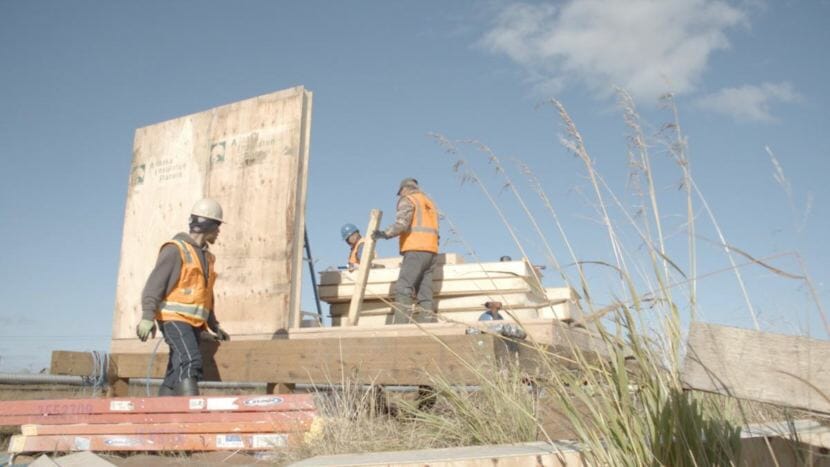
The Yukon-Kuskokwim Delta has a housing crisis. Roughly 3,000 new homes are needed, but less than 30 houses are built in the region each year, according to a statewide housing assessment. Meanwhile, nearly half of the region’s existing homes are overcrowded, and the population is growing. One regional fisheries organization is hoping to close the gap with a tiny project that could make a big difference.
Coastal Villages Region Fund is the offshore fisheries community development quota holder for 20 Y-K Delta communities. CVRF surveyed its communities earlier this year, asking people what their biggest challenges are. Nearly a third of the respondents said “housing.”
A few months later in November, CVRF released a video of local workers constructing a tiny home in Eek. As the camera pans across the community’s older homes, community leaders explain the housing situation in the village. “The old houses, they’re drafty, they’re moldy,” says CVRF Board Member Carlie Beebe in the video. “We have multiple families living in one home,” adds Stella Alexie, Native Village of Eek tribal administrator.
CVRF is testing a pilot project to see if a tiny home could help solve these issues. Tiny homes are a growing movement across the nation. Owners buy in for different reasons: to embrace minimalism, to reduce their carbon footprint, to build a cool project, or affordability — which is often the driving factor.
But CVRF wasn’t trying to join a movement. It’s trying to start a movement of its own, starting with a 320-square-foot home.
“It’s a single level. There’s two private rooms with doors. One is a bathroom and one is a bedroom, and the common area would be the living room and kitchen,” explained Bob Marquez, CVRF Products and Services Manager.
According to CVRF’s research, a federally-funded home usually costs the homeowner $200 per month. CVRF wanted to see what kind of mortgage that money could buy if individual homebuyers could also qualify for federal funds and CVRF grants.
“We were really just trying to show that mortgages were possible,” said Marquez.
Mortgages are rare in the Y-K Delta. Home building is expensive and unemployment is high. Federal dollars funneled through the regional housing authority pay for the majority of homebuilding. Around 27 homes are built in the region per year, according to a statewide housing assessment from the Alaska Housing Finance Corporation. That’s not enough to meet the region’s current need of 3,000 new homes.
“At $200 a month, we worked backwards and figured that we had to build something with the overall cost of about $75,000,” said Marquez. “And that turned out to be this 320-square-foot tiny house.”
Theo Brown lives in Eek and led the housing construction. “As soon as construction started,” he said, “we had people asking how they could apply for this house and who was selling it.”
The house is built with thick foam insulation and is highly energy-efficient. “When we were constructing the inside, we were using 500-watt work lights, and those basically heat up that house,” Brown said.
The home is tiny by anybody’s standards, but it is designed to be expanded if needed. “So, keeping utilities off the wall. Keeping in mind where it’s situated on the property, making sure the property is lendable, so that a bank will loan you money to do a second if you want to add on,” Marquez explained.
The Native Village of Eek has selected a homebuyer, and CVRF has had four plots surveyed in the village for more tiny homes to be built. The organization is not entering the homebuilding business with this project. Instead, it’s trying to provide a new model for coastal communities where housing is no tiny issue.